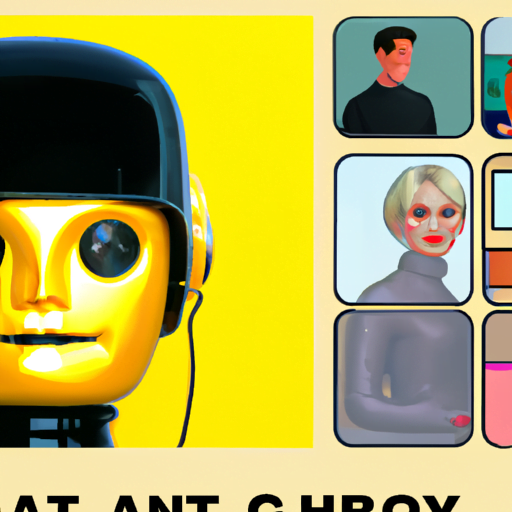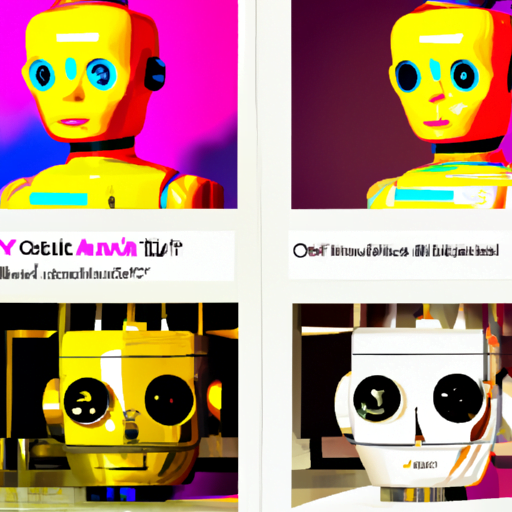
-
Table of Contents
- Designing AI-Powered Chatbots with Personality and Style
- The Importance of Personality and Style in Chatbots
- Understanding User Expectations
- Designing Chatbot Personalities
- Adding Style to Chatbot Interactions
- Case Studies: Successful Chatbots with Personality and Style
- 1. Sephora’s Virtual Assistant
- 2. Duolingo’s Language Learning Chatbot
- Conclusion
Designing AI-Powered Chatbots with Personality and Style

Chatbots have become an integral part of our digital lives, assisting us with various tasks and providing instant support. As artificial intelligence (AI) continues to advance, chatbots are becoming more sophisticated, capable of understanding and responding to human interactions with greater accuracy. However, designing chatbots that not only provide accurate information but also have personality and style is crucial for creating engaging and memorable user experiences. In this article, we will explore the importance of designing AI-powered chatbots with personality and style, and provide valuable insights on how to achieve this.
The Importance of Personality and Style in Chatbots
When interacting with a chatbot, users expect more than just accurate responses. They want an experience that feels human-like, engaging, and enjoyable. Incorporating personality and style into chatbots can help achieve this, making the interaction more relatable and memorable. Here are some key reasons why personality and style are important in chatbot design:
- Building rapport: Chatbots with personality and style can establish a connection with users, making them feel more comfortable and engaged. This rapport-building can lead to increased user satisfaction and loyalty.
- Enhancing user experience: A chatbot with a distinct personality and style can transform a mundane interaction into an enjoyable conversation. This enhances the overall user experience and encourages users to return for future interactions.
- Brand representation: Chatbots can serve as brand ambassadors, reflecting the values and tone of the company they represent. Incorporating personality and style ensures consistency with the brand image and helps reinforce brand identity.
Understanding User Expectations
Before designing a chatbot with personality and style, it is essential to understand the expectations and preferences of the target audience. Conducting user research and gathering feedback can provide valuable insights into what users find appealing and relatable. Here are some factors to consider:
- Target demographic: Different demographics may have varying preferences when it comes to chatbot personalities. For example, a chatbot designed for a younger audience may have a more casual and playful tone, while a chatbot for professionals may adopt a more formal and informative approach.
- Brand voice: Aligning the chatbot’s personality with the brand voice is crucial for maintaining consistency. If the brand is known for being friendly and approachable, the chatbot should reflect those qualities.
- Context and purpose: The context in which the chatbot will be used and its purpose should also influence its personality and style. For instance, a chatbot assisting with customer support may need to be empathetic and patient, while a chatbot providing entertainment may be more humorous and light-hearted.
Designing Chatbot Personalities
Creating a chatbot personality involves defining its characteristics, tone, and behavior. Here are some key considerations when designing chatbot personalities:
- Character traits: Determine the personality traits that align with the chatbot’s purpose and the brand it represents. These traits can range from being helpful and friendly to being witty and humorous.
- Tone of voice: Define the tone of voice that the chatbot will use when interacting with users. This can be formal, casual, professional, or any other tone that suits the target audience and the context of the conversation.
- Language style: Consider the language style that the chatbot will adopt. This includes factors such as the use of slang, jargon, or technical terms. The language style should be appropriate for the target audience and the purpose of the chatbot.
- Emotional intelligence: Incorporating emotional intelligence into chatbots can make the interactions more human-like. Chatbots can be programmed to understand and respond empathetically to user emotions, providing a personalized experience.
Adding Style to Chatbot Interactions
In addition to personality, incorporating style into chatbot interactions can further enhance the user experience. Here are some ways to add style to chatbot interactions:
- Use of humor: Introducing humor into chatbot conversations can make them more enjoyable and memorable. However, it is important to strike the right balance and ensure that the humor is appropriate for the context and the target audience.
- Personalization: Tailoring the chatbot’s responses to individual users can create a sense of personalization. This can be achieved by using the user’s name, remembering previous interactions, and providing recommendations based on their preferences.
- Visual elements: Incorporating visual elements, such as emojis or GIFs, can add a touch of style to chatbot interactions. These visual cues can help convey emotions and make the conversation more engaging.
- Interactive features: Including interactive features, such as quick polls or quizzes, can make the conversation more dynamic and entertaining. This encourages users to actively participate and increases their engagement.
Case Studies: Successful Chatbots with Personality and Style
Several companies have successfully implemented chatbots with personality and style, creating memorable user experiences. Let’s explore a few case studies:
1. Sephora’s Virtual Assistant
Sephora, a leading beauty retailer, introduced a chatbot called “Sephora Virtual Artist” to assist customers with makeup-related queries. The chatbot was designed with a friendly and helpful personality, using a casual tone of voice. It provided personalized recommendations based on the user’s preferences and even allowed users to virtually try on different makeup products. The chatbot’s engaging personality and interactive features made it a hit among Sephora’s customers.
2. Duolingo’s Language Learning Chatbot
Duolingo, a popular language learning platform, incorporated a chatbot into its app to help users practice conversational skills. The chatbot, named “ChatGPT,” was designed with a playful and encouraging personality. It used humor and gamification elements to make the language learning experience more enjoyable. The chatbot’s style and personality motivated users to engage in conversations and practice their language skills regularly.
Conclusion
Designing AI-powered chatbots with personality and style is essential for creating engaging and memorable user experiences. By building rapport, enhancing user experience, and representing the brand, chatbots with personality and style can leave a lasting impression on users. Understanding user expectations, designing chatbot personalities, and adding style to interactions are key steps in achieving this. Successful case studies, such as Sephora’s Virtual Assistant and Duolingo’s Language Learning Chatbot, demonstrate the effectiveness of incorporating personality and style into chatbot design. As AI continues to evolve, it is
